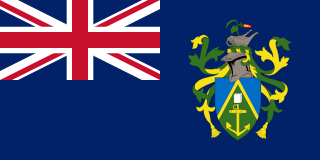Pitcairn Islands - Introduction

Here, let us take a look at some of the important facts about the country Pitcairn Islands. Here, we have some interesting facts about Pitcairn Islands. Pitcairn Islands (officially: Pitcairn Group of Islands) is a country in Oceania, precisely in Polynesia, with a population of about N/A inhabitants today (2025-12-25). The capital city of Pitcairn Group of Islands is Adamstown, and the official country TLD code is .pn. Pitcairn Islands has cca2, cca3, cioc, ccn3 codes as PN, PCN, N/A, 612 respectively. Check some other vital information below.
Polynesians were the first settlers on the four tiny islands that are now called the Pitcairn Islands, but all four were uninhabited by the time Europeans discovered them in 1606. Pitcairn Island -- the only one now inhabited -- was rediscovered by a British explorer in 1767. In 1789, Fletcher CHRISTIAN led a mutiny on the HMS Bounty, and after several months of searching for Pitcairn Island, he landed on it with eight other mutineers and their Tahitian companions. They lived in isolation and evaded detection by English authorities until 1808, when only one man, 10 women, and 23 children remained. In 1831, with the population of 87 proving too big for the island, the British attempted to move all the islanders to Tahiti, but they were soon returned to Pitcairn Island. The island became an official British colony in 1838, and in 1856, the British again determined that the population of 193 was too high and relocated all the residents to Norfolk Island. Several families returned in 1858 and 1864, bringing the island’s population to 43, and almost all of the island’s current population are descendants of these returnees.
The UK annexed the nearby uninhabited islands of Henderson, Oeno, and Ducie in 1902 and incorporated them into the Pitcairn Islands colony in 1938. The population peaked at 233 in 1937 as outmigration, primarily to New Zealand, has since thinned the population. Only two children were born between 1986 and 2012, and in 2005, a couple became the first outsiders to obtain citizenship in more than a century. Since 2013, the Pitcairn Islands has tried to attract new migrants but has had no applicants because it requires prospective migrants to front significant sums of money and prohibits employment during a two-year trial period, at which point the local council can deny long-term resident status.
The UK annexed the nearby uninhabited islands of Henderson, Oeno, and Ducie in 1902 and incorporated them into the Pitcairn Islands colony in 1938. The population peaked at 233 in 1937 as outmigration, primarily to New Zealand, has since thinned the population. Only two children were born between 1986 and 2012, and in 2005, a couple became the first outsiders to obtain citizenship in more than a century. Since 2013, the Pitcairn Islands has tried to attract new migrants but has had no applicants because it requires prospective migrants to front significant sums of money and prohibits employment during a two-year trial period, at which point the local council can deny long-term resident status.
All Important Facts about Pitcairn Islands
Want to know more about Pitcairn Islands? Check all different factbooks for Pitcairn Islands below.
-
 Pitcairn Islands Factbook
Pitcairn Islands Factbook
-
 The Economy of Pitcairn Islands
The Economy of Pitcairn Islands
-
 Learn about the Government of Pitcairn Islands
Learn about the Government of Pitcairn Islands
-
 Communication in Pitcairn Islands
Communication in Pitcairn Islands
-
 Popular Universities in Pitcairn Islands
Popular Universities in Pitcairn Islands
-
 Enerny in Pitcairn Islands
Enerny in Pitcairn Islands
-
 Transport in Pitcairn Islands
Transport in Pitcairn Islands
-
 The Geography and society of Pitcairn Islands
The Geography and society of Pitcairn Islands
-
 The Environment of Pitcairn Islands
The Environment of Pitcairn Islands
-
 Military and security in Pitcairn Islands
Military and security in Pitcairn Islands